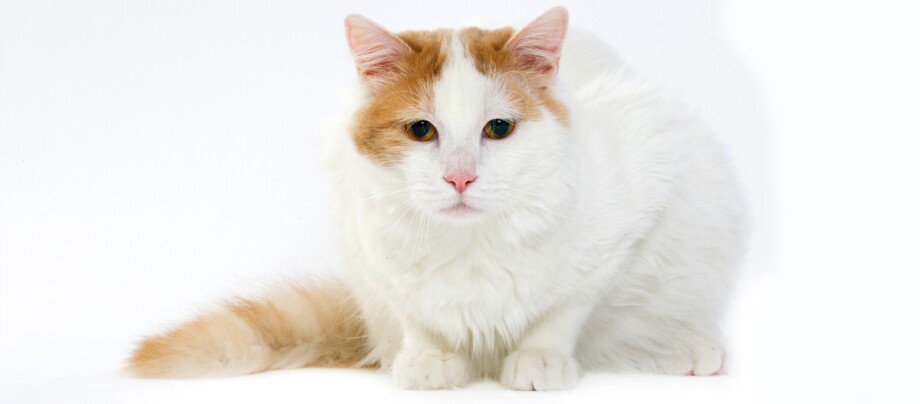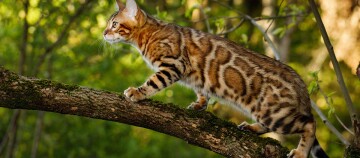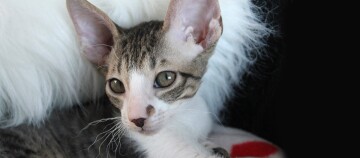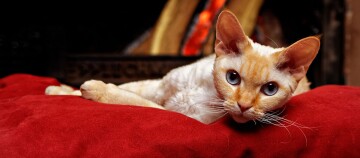Turkish Van - Agile Cat with a Big Heart for Its Human Companions
01.01.2024 - Reading time: 3 minutes

The Turkish Van has a friendly and gentle cat personality. At the same time, it has a curious and playful nature. Because the Van cat is extremely intelligent, it quickly learns how to open doors, closets and lids, and continually surprises its owner with little pranks. The Turkish feline beauty develops a strong connection to people and does not like to be alone. They should also always have the companionship of another cat.
NewsletterTurkish Van
Breed | Turkish Van (semi-longhaired cat) |
Origin | Turkey, region around Lake Van |
Size | medium |
Weight | Female cats approximately 4.5 to 6 kg, male cats approximately 6 to 9 kg |
Physique | strong with broad chest, bushy tail, ruff |
head shape | v-shaped, tuft of hair on the ears |
Eyes | blue, amber coloured, various colours |
Coat and colour | silky, light summer fur and thick winter fur; water-repellent; background colour white with flecks on the head and tail; colours of the markings: black, blue, white, cream, red |
Coat care | occasional brushing |
Nature | friendly, social, intelligent, devoted |
Special features | loves water |
Owning | not as a single cat, needs a lot of space and attention, ideally an outdoor cat |
The character of the Turkish Van
Cats of the Turkish Van breed are very gentle, friendly creatures who like to talk loudly with their humans. They are very active, curious and extremely intelligent. Because the elegant feline is open to people, other cats and even dogs, they are well-suited as a family pet. The strong sense of playfulness in the Turkish Van, still seen even in their old age, as well as the need for attention requires a willingness to interact with the cat on a regular basis.
Keeping and care
Even though the Turkish Van is very easy to care for, they make demands in certain areas. They do not like to be alone, love to play and hunt and like to be appropriately occupied. The cuddly feline should have a fellow cat at their side in any case, and ideally get to spend some time outdoors. The person or family that chooses a Van cat should spend a lot of time with it to sufficiently satisfy its need for play. Although the cat breed is considered a longhair cat, the fur of this beautiful animal is easy to care for because there is no underfur.
Colour
The background colour of the Turkish Van’s fur is 80 percent white or cream. Only the areas of the ears and the tail have markings in a different colour. All breeding associations allow the colours red and cream. Blue and black are sometimes recognized as permitted colours with the associated tortoise shell colours. There are also many Van cats without markings.
History of the Turkish Van
The Turkish Van, as the name implies, comes from Turkey and is indigenous to the area of Lake Van. Until 1955 this breed of cats was quite unknown outside of Turkey, although the animals had already been living in East Anatolia for several thousand years as relics of a battle of the Romans against the Armenians. In 1955 two British women brought a pair of cats home and started breeding them. The Turkish Van was recognized as a breed in 1969.
Special features
The Turkish breed of cat shows specific characteristics: while most cats generally have up to three types of cat hair, the Turkish Van only has one type of hair in winter and in summer. In the warm seasons that fur is quite silky, light and soft, and in the cold seasons it is especially thick and warm.
The fur is also water-repellent. The reason: the Van cat is not a bit afraid of the water, and in fact enthusiastically plays in and with the cool water. In their homeland they are talented at catching fish. Accordingly, the owner of a Turkish Van should painstakingly take care to secure open sources of water in the house. Otherwise there is the risk that the Turkish beauty will try to go fishing in the aquarium or mess with an open WC, which could be very dangerous for the animal.





